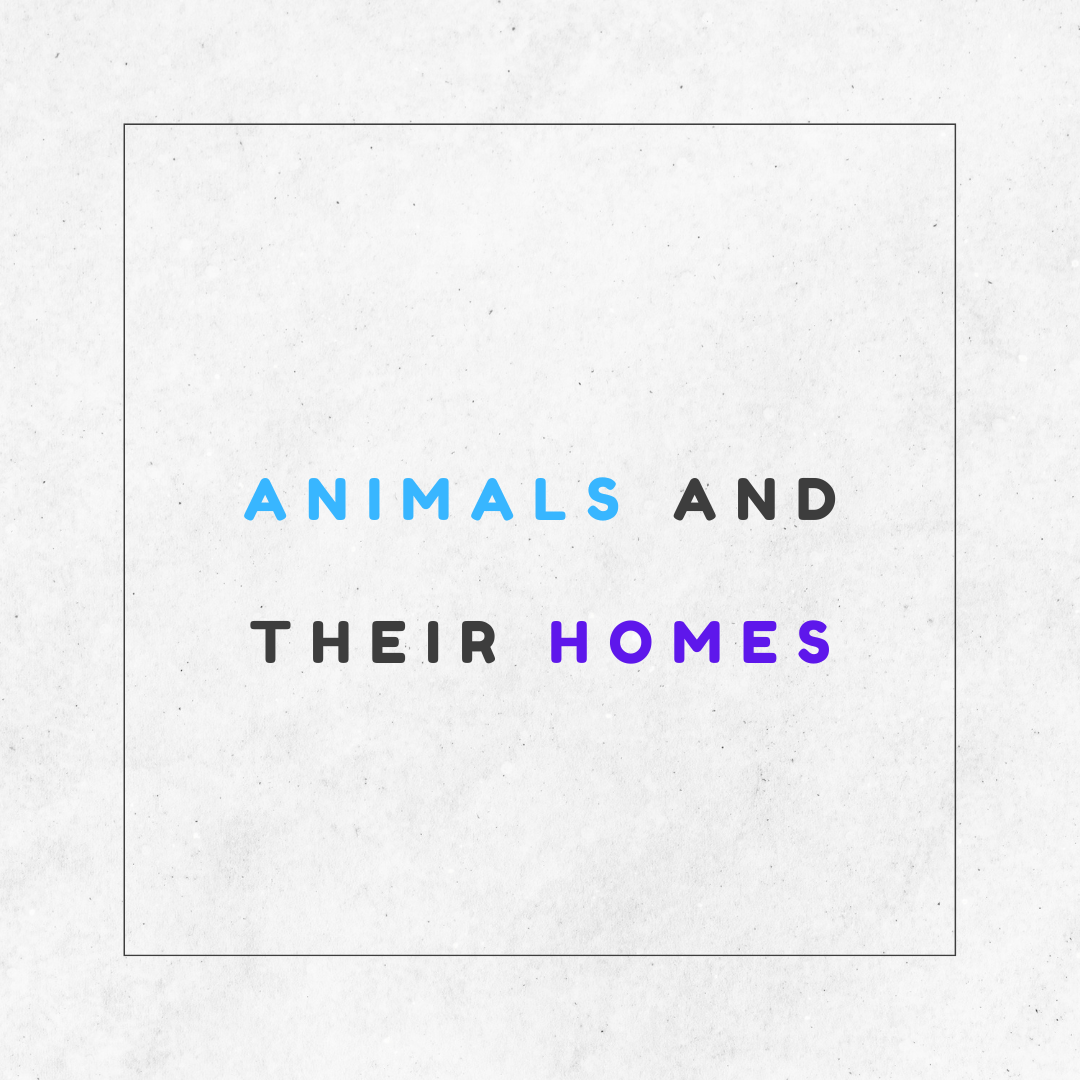Understanding where different animals live is a fundamental aspect of studying the natural world. Each animal has a unique habitat that meets its needs for survival, and these habitats can vary widely from one species to another. This article will explore the diverse animals and their homes, including worksheets, charts, and information in various languages such as Hindi and Marathi. We will cover wild animals, domestic animals, and farm animals, providing a comprehensive guide for kids and educators.
Animals and Their Homes
Here are some common animals and their homes:
- Lion – Den: Lions often rest and give birth in dens, which are sheltered areas usually in the form of caves or dense vegetation.
- Bird – Nest: Birds build nests using twigs, leaves, and other materials to lay their eggs and raise their chicks.
- Bee – Hive: Bees live in hives, which they build using wax. These hives house the queen bee and worker bees.
- Spider – Web: Spiders create intricate webs to catch their prey and sometimes use them as a place to live.
- Rabbit – Burrow: Rabbits dig burrows in the ground to live in and protect themselves from predators.
- Fish – Water (ponds, lakes, rivers, oceans): Fish live in various water bodies, each adapted to their specific needs.
- Bear – Cave: Bears often use caves for hibernation and protection from the elements.
- Elephant – Savanna/Forest: Elephants roam large areas of savanna or forest, where they find food and water.
- Frog – Pond: Frogs are commonly found in ponds, where they lay their eggs and live near water.
- Dog – Kennel: Domesticated dogs often live in kennels, which provide them shelter and safety.
Animals and Their Homes Worksheets
Read and practice for animals and their homes worksheets:
- Matching Exercise: Match the animal to its home.
- Lion – Den
- Bird – Nest
- Bee – Hive
- Rabbit – Burrow
- Fill-in-the-Blanks: Complete the sentences.
- A rabbit lives in a ______.
- Bees build their homes in a ______.
- Labeling Diagrams: Provide pictures of animals and their homes and ask students to label each one.
- Crossword Puzzles: Create a crossword puzzle with clues related to animals and their homes.
Wild Animals and Their Homes
List of some wild animals and their homes:
- Tiger – Jungle: Tigers live in dense jungles and forests where they hunt for prey.
- Giraffe – Savanna: Giraffes are found in the savannas of Africa, where they feed on tall trees.
- Penguin – Antarctic: Penguins live in the cold regions of Antarctica, where they nest on the ice.
- Kangaroo – Outback: Kangaroos inhabit the Australian outback, which provides ample space for grazing.
- Polar Bear – Arctic: Polar bears live in the Arctic region, where they hunt seals on the ice.
Domestic Animals and Their Homes
Here are some examples of domestic animals and their homes:
- Cat – House: Cats are common household pets that live inside homes.
- Cow – Barn: Cows are typically kept in barns on farms.
- Chicken – Coop: Chickens live in coops, which provide them with shelter and nesting areas.
- Horse – Stable: Horses are housed in stables, where they are cared for and trained.
- Pig – Sty: Pigs live in sties, which are enclosures on farms.
Animals and Their Homes in Hindi
Here are some examples of animals and their homes in Hindi:
- शेर (Lion) – गुफा (Cave/Den)
- चिड़िया (Bird) – घोंसला (Nest)
- मधुमक्खी (Bee) – छत्ता (Hive)
- खरगोश (Rabbit) – बिल (Burrow)
- मछली (Fish) – पानी (Water)
Animals and Their Homes Chart for Kids
Below are the examples of animals and their homes chart for kids:
| Animal | Homes of Animals |
|---|---|
| Lion | Den |
| Bird | Nest |
| Bee | Hive |
| Rabbit | Burrow |
| Fish | Water |
| Bear | Cave |
| Elephant | Savanna |
| Frog | Pond |
| Dog | Kennel |
| Cat | House |
Farm Animals and Their Homes
Check out some common farm animals and their homes:
- Cow – Barn: Cows are often housed in barns where they are milked and cared for.
- Chicken – Coop: Chickens live in coops, which protect them from predators and harsh weather.
- Sheep – Pen: Sheep are kept in pens or pastures where they can graze.
- Horse – Stable: Horses live in stables where they are sheltered and groomed.
- Goat – Shelter: Goats are kept in shelters that provide protection from the elements.
Animals and Their Homes in Marathi
Study for few Animals and Their Homes in Marathi:-
- सिंह (Lion) – गुहा (Cave/Den)
- पक्षी (Bird) – घरटे (Nest)
- मधमाशी (Bee) – पोळ (Hive)
- सशा (Rabbit) – बिळ (Burrow)
- मासा (Fish) – पाणी (Water)
Conclusion – Animals And Their Homes Name
Understanding animals and their homes name is crucial for appreciating the diversity of the natural world. This knowledge helps children and adults alike to understand how animals adapt to their environments and how they meet their basic needs. Whether it’s through worksheets, charts, or multilingual education, learning about animals and their homes is an engaging and educational journey.
Providing resources such as worksheets, charts, and translations in various languages like Hindi and Marathi ensures that this knowledge is accessible to a broader audience. By studying the homes of wild, domestic, and farm animals, we gain a deeper appreciation for the intricate balance of nature and the importance of conserving habitats for all living creatures.
